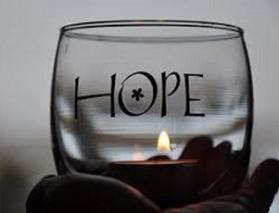Imagine a jigsaw puzzle, a thousand pieces or more. There is no box showing what the completed puzzle will look like. But that’s okay, because this is an unusual puzzle. The various pieces can fit together in many different ways, producing any number of possible finished pictures. The puzzle assembler has to decide, early on in the process, what she or he wants the finished product to look like; each subsequent choice about which pieces to join together is guided by that overall vision.

Creating a course syllabus is something like that, especially when the course is one that I am teaching for the first time, as I am this semester. I am teaching an upper-division course called “Contemporary Women Philosophers.” It’s an unfortunate title, of course, implying that there’s something odd, unusual, or worth noting about the fact that even women can do philosophy. There is no similarly named course called “Contemporary Male Philosophers,” the assumption being that if philosophy is being done, guys must be doing it—women doing it is a bit of an interesting side show.
I’m sure the title of the course is a relic a few decades old, hearkening back to a time when someone might actually have been amazed by women doing philosophy. This never has surprised me—were I to list the half dozen or so philosophers in the past 150 years in the Western tradition who have most interested me and changed how I think about things, at least four of them would be women. Armed with an unfortunate course title and several candidates for inclusion on the syllabus, I assembled the puzzle over the past several months.
Three philosophers who happen to be women are the focus of the course; the lives of two of them were contained within the twentieth century, while the third is still living. All three were academics and professors for at least part of their adult lives. One was an agnostic Jew attracted later in life to Catholic Christianity, one was a self-proclaimed atheist who imagined a “religionless Christianity” in which the Christian ethic is largely preserved without accoutrements like dogma, doctrine or God, and one is a Pulitzer prize winning essayist and novelist who is also an unashamed Calvinist. God-obsessed all, in other words. All three consider human beings to be by far the most interesting subject in the universe for study and discussion. All three, in their own ways, are examples of the not-frequently-acknowledged fact that it is possible to both do philosophy well and to write brilliantly at the same time.
If I asked my colleagues in the philosophy department to provide me with their choice of the top three philosophers in the last 150 years, none of these three women would be on anyone’s list. They would probably not even be on anyone’s list of the most influential philosophers in the past 150 years who happened to be women. So why have I chosen these three to be the central focus of this course next semester? The answer is simple: They are important to me.
Over the course of more than a quarter-century of college teaching, I have come to realize that the best learning environments are products of a teacher engaging students with texts and ideas that are important, not because the authors are famous and agreed to be among the “greats” (although they might be famous and great), nor because the authors have had measurable impacts on the world at large (even though they might have had such impacts), but rather because the authors and ideas have made a demonstrable difference in the life of the teacher.
For the purposes of this semester’s course, the common thread connecting these three very different women will be on display on a daily basis in the classroom. That common connecting thread is me. It is up to me to assemble, out of the texts and ideas from these authors, certain texts and ideas that have stimulated and changed me as a teacher and as a human being over the past many years, a “show and tell” story that will, if successful, draw and entice my students into the world of collective learning where we will encounter, as Marilynne Robinson describes it, “the human mind at its mystifying work, endlessly, sometimes brilliantly, fitting myth and reason to reality, testing them against reality, just for the pleasure of it.”
Robinson is one of the three chosen pillars of next semester’s course.. As I was reviewing one of her essays while on the stationary bike at the gym a few mornings ago (I do a lot of course prep on the stationary bike), I read something that made me smile.
I remember once, as a child, walking into a library, looking around at the books, and thinking, I could do that.
I smiled, because the child she was describing, Marilynne at a young age, could have been me. I didn’t know I would end up being a professor until my early thirties, but I have loved books and school ever since I can remember. Marilynne Robinson writes of her extensive and eclectic personal library; although I suspect hers is larger than mine, a similarly eclectic collection of books line bookshelves in every spare corner of my home. Early in our relationship Jeanne observed that I don’t need a lot of flesh and blood friends because books are my friends. And she was right. As Robinson observes, “I have my library all around me, my cloud of witnesses to the strangeness and brilliance of human experience, who have helped me to my deepest enjoyments of it.”
I have had several opportunities recently to give an account of how my faith and my commitment to the life of the mind work together—I find myself responding by telling stories. I’ve been asked for evidence to prove that faith works—and I tell another story. I shouldn’t be surprised, because this is what human beings do when asked to explain themselves—we tell stories. Putting the puzzle of a new course together is challenging and rewarding for many reasons, not the least being that it is very similar to assembling the pieces of a life.
One of the greatest blessings of being human is that every day each of us gets to roll out of bed and create the world. Scripture reminds us regularly that we are renewed every morning. On our best days, in response to the opportunity to be a conduit through which the divine can enter the world, our response should be “I could do that.”













